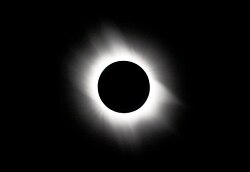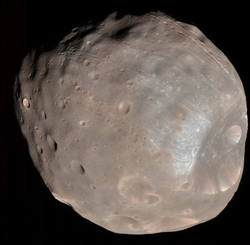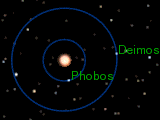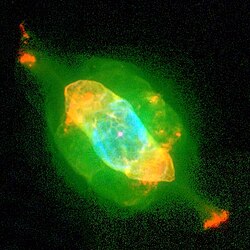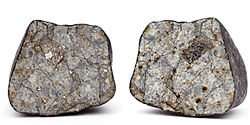Portal:Astronomi/Udvalgt billede arkiv
- Tidligere udvalgte billeder
Spiralgalaksen NGC 1672
Foto af: Hubble-rumteleskopet (NASA)
Vist 24. august 2007 - 11. april 2008Oriontågen hvori stjerner dannes
Foto af: Hubble-rumteleskopet (NASA)
Vist 28. marts 2010 - 22. maj 2010Tjeljabinsk-meteoren (nedslag: 15. feb. 2013)]
Vist 21. marts 2013 – 17. juli 2017- (c) ESA/Hubble, CC BY 4.0
Krabbetågen optaget med flere forskellige teleskoper 15. maj 2017
Vist 17. juli 2017 – 13. marts 2018
Medier brugt på denne side
NGC 7009 (Saturn Nebula) Planetary Nebula; Hubble Space Telescope
This NASA Hubble Space Telescope view of the nearby barred spiral galaxy NGC 1672 unveils details in the galaxy’s star-forming clouds and dark bands of interstellar dust. NGC 1672 is more than 60 million light-years away in the direction of the southern constellation Dorado. These observations of NGC 1672 were taken with Hubble's Advanced Camera for Surveys in August of 2005.
Forfatter/Opretter: JiFish at engelsk Wikipedia, Licens: CC BY-SA 2.5
A simulated view of the orbits of Phobos and Deimos.
Forfatter/Opretter: Pavel Maltsev, http://pavelmaltsev.ru/, Licens: CC BY-SA 3.0
Macro photo of a piece of Chebarkul meteorite made by Ekaterinburg photographer Pavel Maltsev at Ural Federal University.
"In one of the most detailed astronomical images ever produced, NASA's Hubble Space Telescope captured an unprecedented look at the Orion Nebula. ... This extensive study took 105 Hubble orbits to complete. All imaging instruments aboard the telescope were used simultaneously to study Orion. The Advanced Camera mosaic covers approximately the apparent angular size of the full moon."
(c) ESA/Hubble, CC BY 4.0
This captivating new image shows the Crab Nebula in bright neon colours. The unusual image was produced by combining data from telescopes spanning nearly the entire electromagnetic spectrum, from radio waves to X-rays. The Karl G. Jansky Very Large Array (VLA) provided information about the nebula gathered in the radio regime (coloured in red). NASA’s Spitzer Space Telescope took images in the infrared (yellow). The NASA/ESA Hubble Space Telescope provided the images made in optical wavelengths (coloured in green). ESA’s XMM-Newton telescope observed the Crab Nebula in the ultraviolet (blue) and NASA’s Chandra X-ray Observatory provided the data for X-ray radiation (purple).
The Crab Nebula, located 6500 light-years from Earth in the constellation of Taurus (The Bull), is the result of a supernova explosion which was observed by Chinese and other astronomers in 1054. At its centre is a pulsar: a super-dense neutron star, spinning once every 33 milliseconds, shooting out rotating lighthouse-like beams of radio waves and visible light.
Surrounding the pulsar lies a mix of material; some of it was originally expelled from the star before it went supernova, and the rest was ejected during the explosion itself. Fast-moving winds of particles fly off from the neutron star, energising the dust and gas around it. These different layers and intricacies of the nebula can be observed in all of the different wavelengths of light.Forfatter/Opretter: Klaus Kemmerich, Licens: CC BY-SA 2.5
Sonnenfinsternis 29.03.2006 in der Türkei
